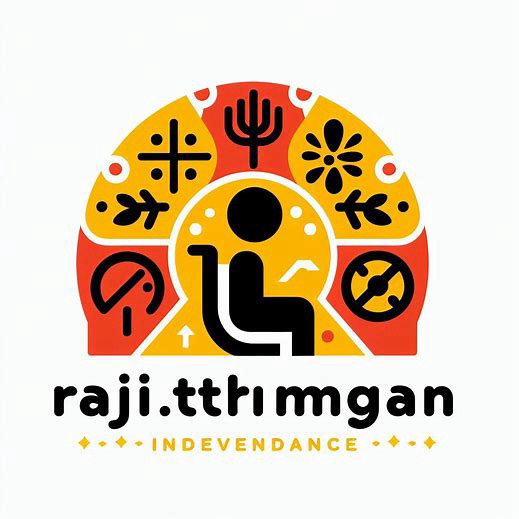Imagine walking into a building, excited for what’s inside, only to find the doors too narrow, the steps too steep, and the hallways cramped. It’s like being invited to a party, only to realize you can’t even get past the front door. For many, this is an everyday reality, but here’s the good news—accessibility in the built environment is slowly but surely changing that.
Accessibility isn’t just about ramps and elevators—it’s about creating spaces where everyone, regardless of ability, can feel welcome and move freely. Let’s take a journey through this world of inclusive design and see what it’s all about.
The Foundation: What is Accessibility?
At its core, accessibility is about making sure everyone can navigate a space comfortably, whether that means someone with a wheelchair, someone who’s visually impaired, or someone who has trouble hearing. It’s about ensuring that buildings, streets, and public spaces are designed in a way that no one is left out, regardless of their physical abilities.
Think of accessibility as the ultimate invitation to the party—it’s about making sure the doors are wide open for everyone.
The Basics: Ramps, Doors, and Elevators
Most of us take for granted the ability to walk through a door or hop on an elevator without a second thought. But for many, these seemingly simple tasks can be a challenge. That’s where ramps, wide doors, and elevators come in. These features make spaces more welcoming, ensuring that someone with mobility challenges doesn’t feel like an afterthought.
Imagine trying to navigate a beautiful building, only to face stairs at every turn. It’s a bit like being given a map to a hidden treasure but finding out you can’t cross the river without a bridge. Elevators and ramps are the bridges that allow everyone to cross to the other side.
Smooth Navigation: Clear Signage and Wayfinding
Have you ever found yourself lost in a large building or public space, scanning the walls for signs to point you in the right direction? Now, imagine trying to find your way around if you couldn’t see the signs or if they were hard to understand.
Clear, accessible signage is essential in creating an environment where people can move through with ease. For someone with a visual impairment, this might mean tactile or braille signage. For someone who has trouble reading or understanding complex language, it could mean simple, clear icons and symbols. It’s like having a personal guide who always knows exactly where you need to go.
Restrooms: A Hidden Hero of Accessibility
Public restrooms—often overlooked—are one of the most important elements in accessible design. Think of them as the unsung heroes. Accessible restrooms are designed with extra space, support bars, and wider stalls to accommodate everyone’s needs. It’s about dignity and independence.
Without accessible bathrooms, a building’s accessibility is incomplete, like a puzzle missing its final piece. A restroom that’s too small or poorly designed doesn’t just inconvenience—it excludes. But when done right, accessible restrooms make everyone feel comfortable and cared for.
The Digital Side: Accessible Technology in Buildings
In today’s world, buildings aren’t just physical—they’re also digital. From apps that guide you to your destination to voice-activated systems that control lights and temperatures, technology plays a big role in modern accessibility. A person with a hearing impairment might benefit from visual alarms, while someone with mobility challenges could use an app to control elevators or doors.
Think of this as an extra layer of accessibility. It’s like upgrading from a manual to an automatic transmission in a car—it makes everything smoother, faster, and more intuitive.
Beyond the Structure: Social Accessibility
Physical design is important, but accessibility isn’t just about what’s built. It’s also about what’s in people’s hearts and minds. It’s about breaking down the social barriers that prevent full participation. A truly accessible built environment isn’t just about ramps and signs—it’s about creating a culture where everyone feels like they belong.
It’s like making a home not just accessible physically but also emotionally. You want people to feel comfortable, respected, and included. Whether it’s making sure events are inclusive or offering support services, accessibility is about creating a mindset where everyone has a seat at the table.
The Bigger Picture: Accessibility for All
The built environment isn’t just for the few; it’s for everyone. When we think about accessibility, it’s easy to focus on individual needs—someone in a wheelchair, someone with a visual impairment. But accessibility benefits all of us. Parents with strollers, seniors with aching knees, and even people carrying heavy loads all benefit from thoughtful, inclusive design.
Creating accessible spaces is about ensuring that no one has to feel like an outsider. It’s about making our world more inclusive, so that everyone can participate fully, no matter what their ability or background.
In Conclusion: Building a Better Tomorrow
The journey toward accessible design isn’t just about meeting a checklist—it’s about building a world where every door is open, every path is clear, and every person is included. It’s a world where people can move through spaces freely, with dignity and ease.
So, the next time you walk into a building, take a moment to appreciate the ramps, the elevators, the clear signs—and remember that accessibility is more than just a feature. It’s a promise that everyone belongs. And as we continue to build for a more inclusive future, let’s make sure that promise is kept in every corner of our world.
Discover more from Rajath tirumangalam‘s professional and personal journey
Subscribe to get the latest posts sent to your email.
